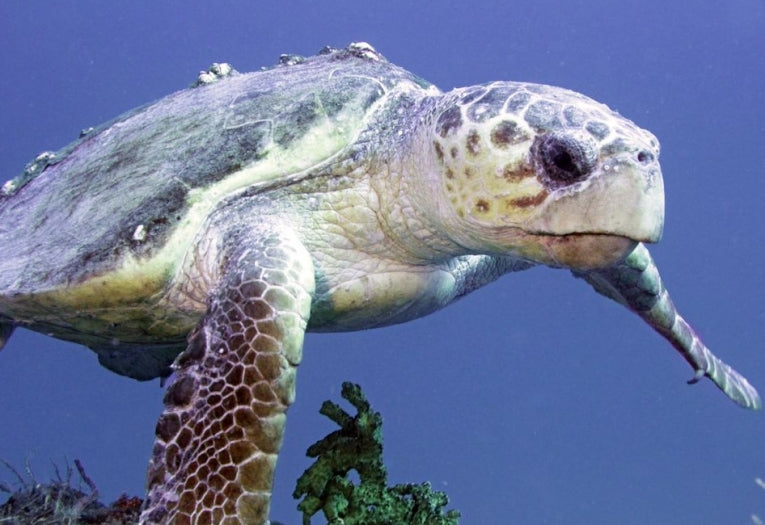Foraging in mid-water (between the deep and 1m depth), the loggerhead turtle changes from its shelly diet of molluscs and begins eating gelatinous prey (jellyfish and other planktonic "jellies"). With cams and data-logger attached, we have now found how Caretta caretta behave in the wild, off the Japanese coast, on several different occasions, using 21.5 hours of footage and 210.8 hours of 3D data were recorded.
From this data, 75 different foraging events were recorded at a mean depth of 19.7m. The animals swam actively at the surface or in mid-water, known technically as the epipelagic zone. 71 forages recovered organisms such as Chrysaora melanaster (8) or Aequorea coerulescens (1) or siphonophores (62.) One turtle foraged at the sea bottom, but light was insufficient down there to determine what it ate!
The turtles in these locations were between their major feeding areas near the coast and migration routes. Feeding on such light prey simply keeps them going rather than supplying a genuinely useful diet. For young turtles, the jellyfish could be sustaining but the adults would require to build up fat before migration.

Loggerhead Turtles (Caretta caretta) using vision to forage on gelatinous prey in mid-water; Credit: © PLOS ONE
Faecal analysis conducted before the studies, proved that conch and sea urchin as well as molluscs contributed greatly to diet. Dense patches of jellyfish could occasionally supply adult turtles on migration, despite the lack of energy density in the bodies. The ectothermal metabolic rate is also low, even in turtles
Cues for foraging were thought to be visual. Chemical and auditory stimuli could have been used, but the straight movement towards the prey, especially over the last 7.4m, on average shows the visual cue is likely. A zigzag line would be expected if turtles moved towards an olfactory cue. The sea turtles all have better visual acuity underwater than in air. The usefulness of collecting visual and high-res 3D data at the same time lies in the discovery of a deceleration phase in order to catch slow prey.
The authors publish their research in PLOS ONE this week.










